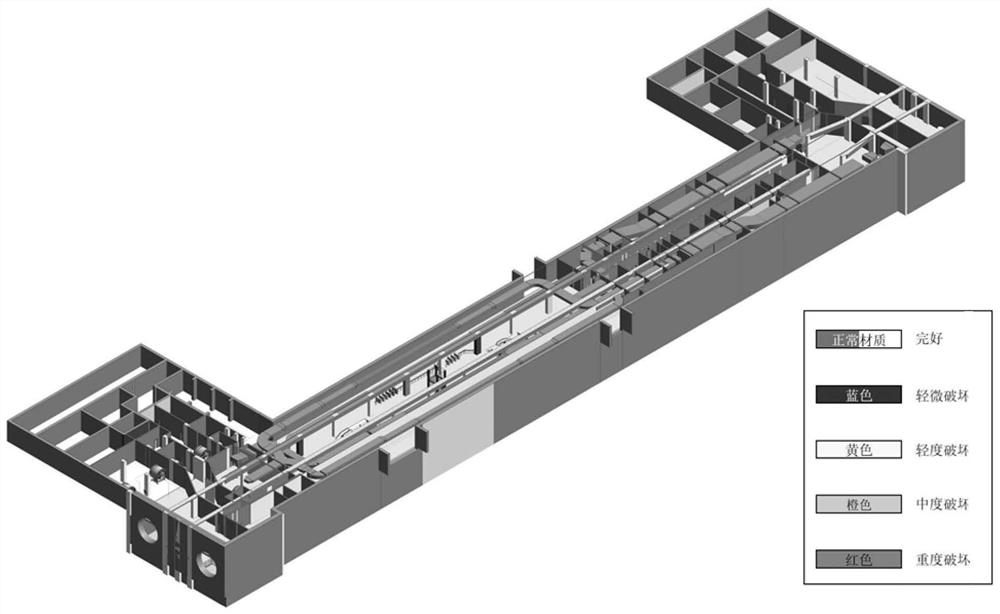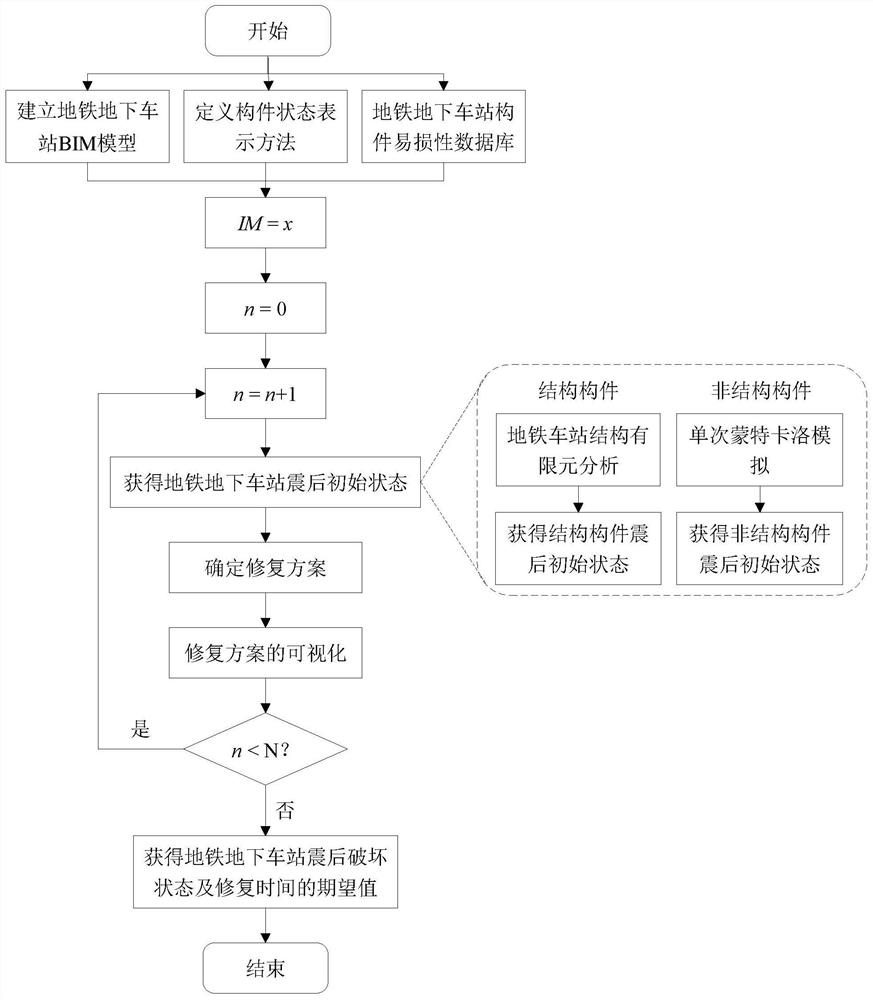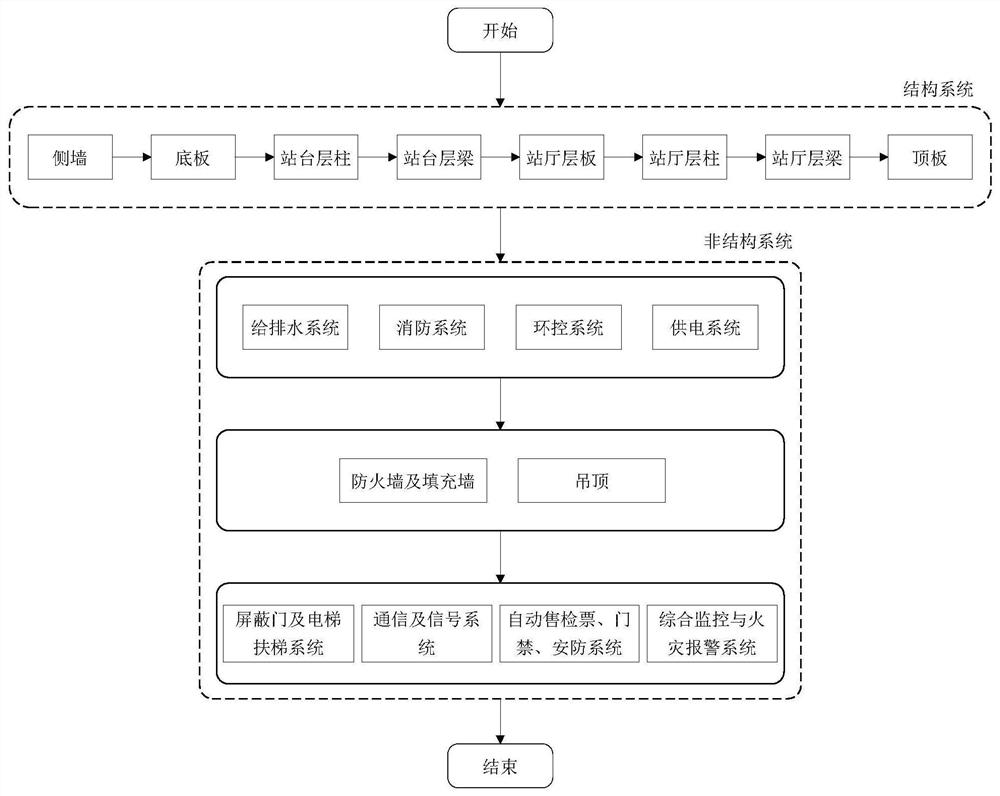A post-earthquake repair scheme determination method for subway underground stations
A technology for underground stations, determination methods, applied in instrumentation, design optimization/simulation, electrical digital data processing, etc.
- Summary
- Abstract
- Description
- Claims
- Application Information
AI Technical Summary
Problems solved by technology
Method used
Image
Examples
specific Embodiment approach 1
[0020] Specific implementation mode one: combine figure 1 Specifically illustrate the present embodiment, the post-earthquake restoration scheme determination method of a kind of subway underground station in the present embodiment, comprises the following steps:
[0021] Step 1. Establish the BIM model of the subway underground station based on CAD drawings and other known 3D model data, and define the representation method of the component state, which can visually display the structural and non-structural components of the subway underground station (including filling walls, ceilings and equipment, etc.) The state after the earthquake and during the repair process; the model is a three-dimensional subway underground station model;
[0022] Step 2: Obtain the post-earthquake initial state of each component of the subway underground station, and at the same time calculate and collect data on the repair cost and repair time required for each structural component and non-struct...
specific Embodiment approach 2
[0034] Specific embodiment 2: The difference between this embodiment and specific embodiment 1 is that in the first step, the colors corresponding to the states of structural and non-structural components in the BIM model are defined as figure 1 , shown in Table 1 and Table 2;
[0035] figure 1 It is the damage state diagram of each component under a certain subway station damage. When the column component is severely damaged, it is red; when the column component is moderately damaged, it is orange; when the column component is slightly damaged, it is yellow; when the column component is slightly damaged When the column member is repaired, it is blue; when the column member is repaired and in good condition, it is white or its original color;
[0036] Table 1 Different states and corresponding colors of structural components
[0037]
[0038]
[0039] Table 2 Different states and corresponding colors of non-structural components
[0040]
[0041] Other steps and pa...
specific Embodiment approach 3
[0042] Specific embodiment three: the difference between this embodiment and specific embodiment one or two is that said step two obtains the post-earthquake initial state of each component of the subway underground station, and the specific process includes:
[0043] Under a certain earthquake intensity, collect the existing experimental or earthquake damage data as the vulnerability function data of the subway underground station. The vulnerability function data includes the median value and the logarithmic standard deviation, and is established according to the vulnerability function data vulnerability function;
[0044] The fragility function F(edp) indicates that under a certain engineering demand parameter (EDP), such as ground peak acceleration (PGA), floor peak acceleration (PFA), etc., the state of structural or non-structural components reaches or exceeds a certain the probability of a broken state;
[0045] According to the fragility function, the exceeding probabi...
PUM
 Login to View More
Login to View More Abstract
Description
Claims
Application Information
 Login to View More
Login to View More - R&D
- Intellectual Property
- Life Sciences
- Materials
- Tech Scout
- Unparalleled Data Quality
- Higher Quality Content
- 60% Fewer Hallucinations
Browse by: Latest US Patents, China's latest patents, Technical Efficacy Thesaurus, Application Domain, Technology Topic, Popular Technical Reports.
© 2025 PatSnap. All rights reserved.Legal|Privacy policy|Modern Slavery Act Transparency Statement|Sitemap|About US| Contact US: help@patsnap.com



